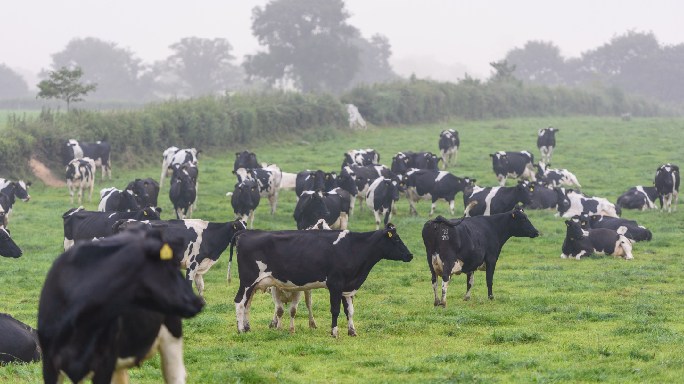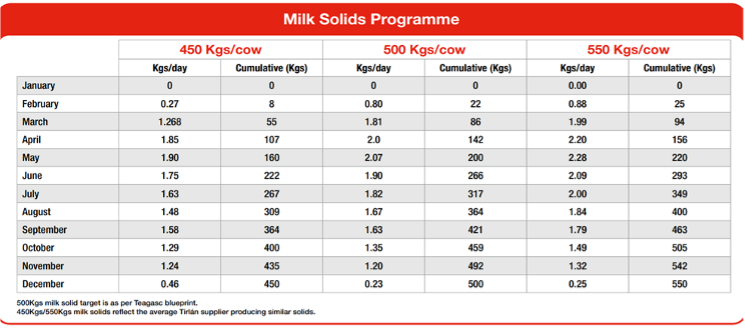Optimising your milk solids performance

Early lactation cows will inevitably be in negative energy balance (NEB), however the severity and duration in NEB can adversely affect milk protein concentration and fertility in the next breeding season if not addressed.
Nutrition
The protein:fat ratio is a good indicator of excessive NEB and BCS loss. With milk protein concentration driven by energy and DM intake of the cow it is well worth monitoring the quantity and quality of the feed cows have access to post calving. Reduced milk protein percentage (<3.05%) in early lactation is also a good indicator of cows going through a phase of excessive negative energy balance. Choose densely energised feed and monitor quality and quantity of grass/silage availability for a balanced nutrition. Grass measuring is required to know the amount of grass is being allocated in order to fill the energy and DM gap accurately with supplementation. When grazing make timely adjustments to the level of concentrate supplementation levels when weather conditions change. This will help maintain energy and DM intakes while also avoiding cows having to dip into their body fat energy reserves for a prolonged period of time after calving. When it comes to milk fat percentage levels, dietary fibre intake is key in driving butter fat percentages and rumen health. All these factors play a role in ensuring DMI in early lactation increases at a continuous rate of 0.75- 1kg DM/week for the first 6 weeks.
Good grassland management has shown to increase milk solids production during the grazing seasons. Early spring is the time to set up the farm to produce high quality grass for your dairy herd for the remainder of the season. Early grazed swards had improved grass quality with a higher proportion of leaf, and consequently a higher nutritive value in energy and protein content resulting in higher milk solids. Grass measuring throughout the year helps manage and maintain high quality grass within the diet.
Fertility
When it comes to milk solids, improved herd fertility can be key to insure the herd’s output increases year on year. By improving overall herd fertility, cows can remain in the herd for longer, thus avoiding the need to replace relatively high yielding cows with lower yielding heifers. Short calving intervals play a significant role in many aspects of increased dairy herd performance. It is imperative that cows calve early in the season, not only will this guarantee a full-length 300+ days lactation, but it also gives cows more time after calving to prepare for the upcoming breeding season Therefore, fertility and milk solids work hand in hand, allowing good performing herds to drive milk solids through consecutive lactations.
Genetics
Cows with a better genetic level for protein percentage deliver higher protein milk. Breeding/sourcing EBI cows and heifers with higher fat and protein percentages as replacements can have an extremely positive effect on overall herd performance with higher solids. Yield per cow is a function of both yield per lactation and number of lactation. Milk recording plays a key role in identifying the most efficient and healthy cows for breeding. A high replacement rate results in a younger herd not given the opportunity to reach its mature potential; a mature cow yields 22% more than a first lactation cow. The target replacement rate of 18% would allow herds to achieve a 4.5 lactation average where gins are evident in terms of milk solids output. Hence, improved cow longevity through selection for greater survival helps attain higher milk solids yield per cow, as well as contributing to a socially responsible and economically sustainable system of milk production.
The Milk Solids Programme within in the GAIN momentum Programme sets out the average milk solids production target that needs to be achieved each month to reach either 450, 500 or 550 kg of milk solids per cow by the end of the lactation. This is a great guide to allow you to identify times of the year that may be challenging to achieve the desired milk solids targets and recognise the reasons why. Come next year a plan can be implemented to improve milk solids production during those trough periods.

For any additional information or advice please contact your Tirlan representative or local branch.
First Published 21 February 2023.
Tagged with: Dairy